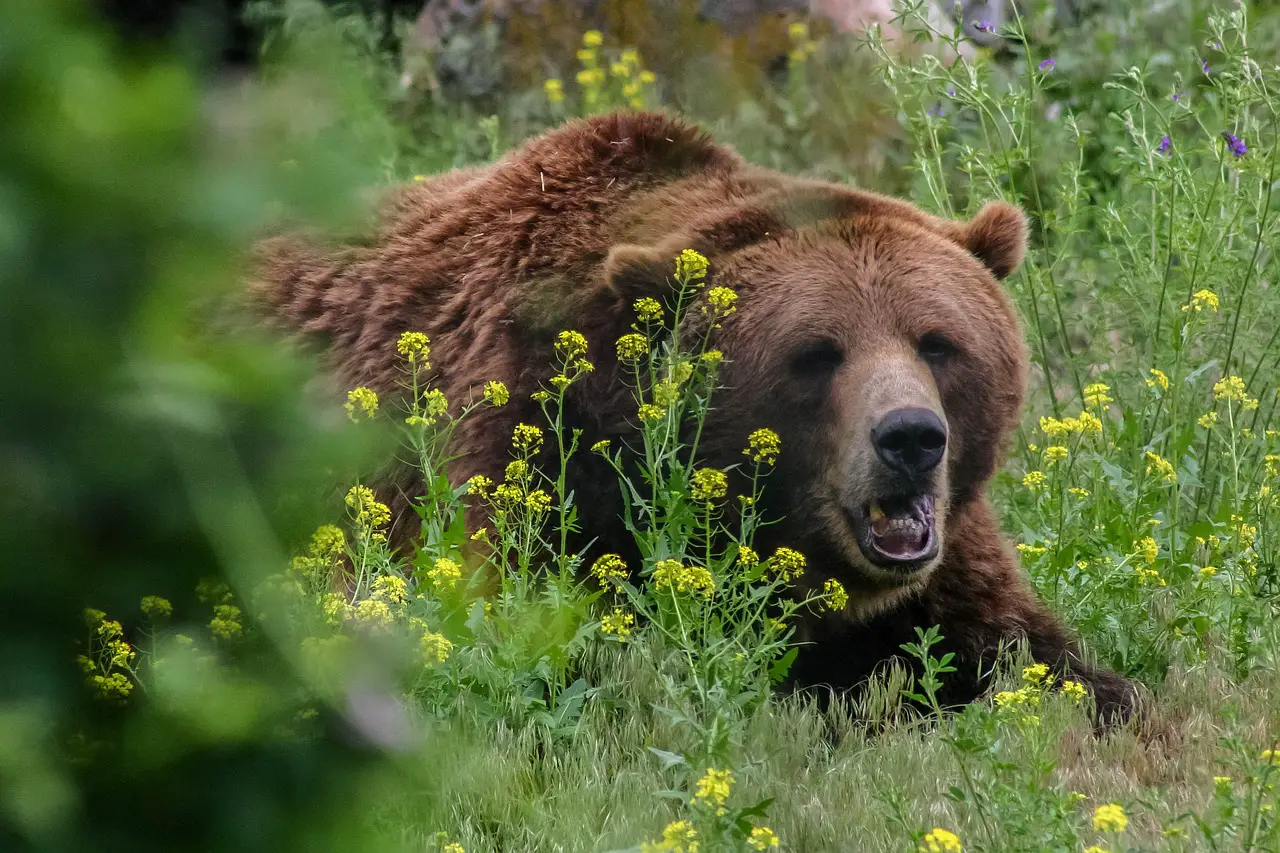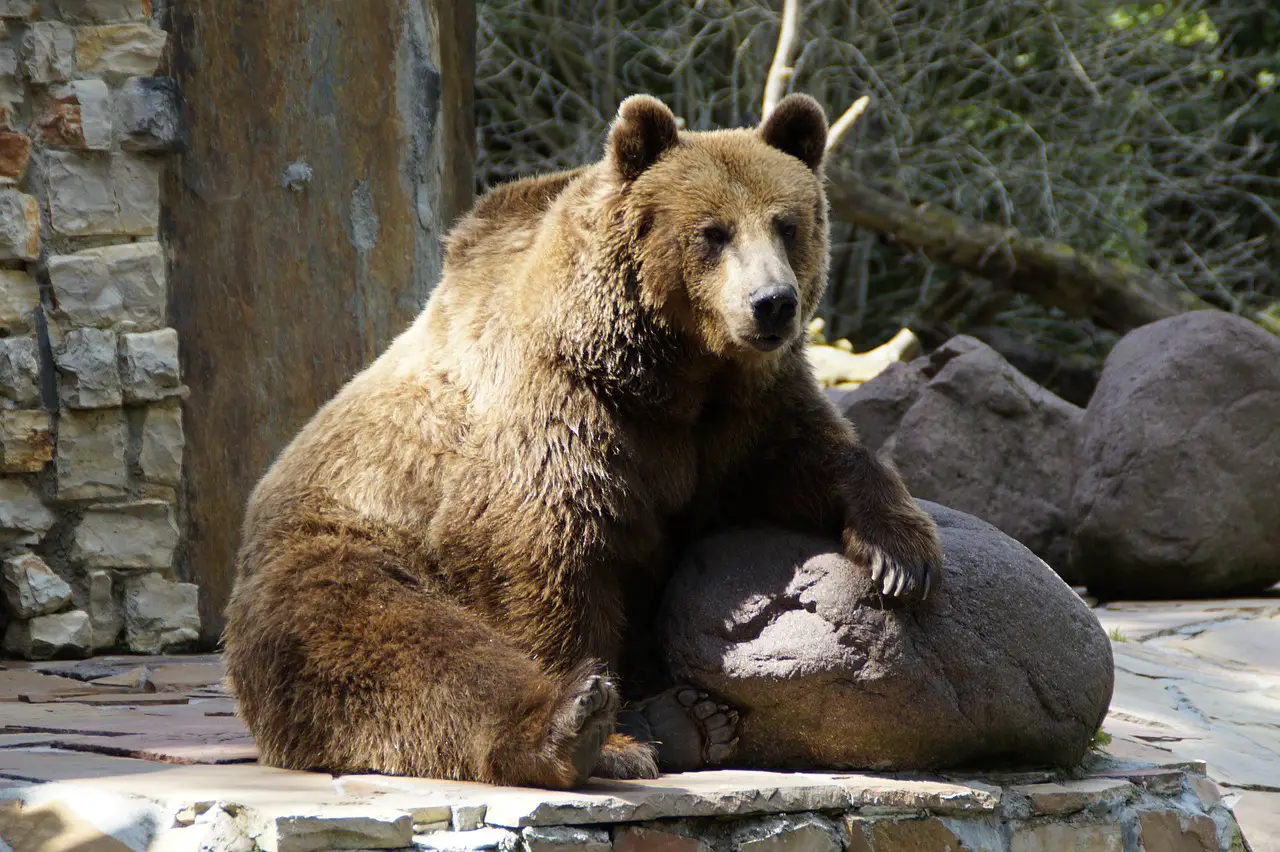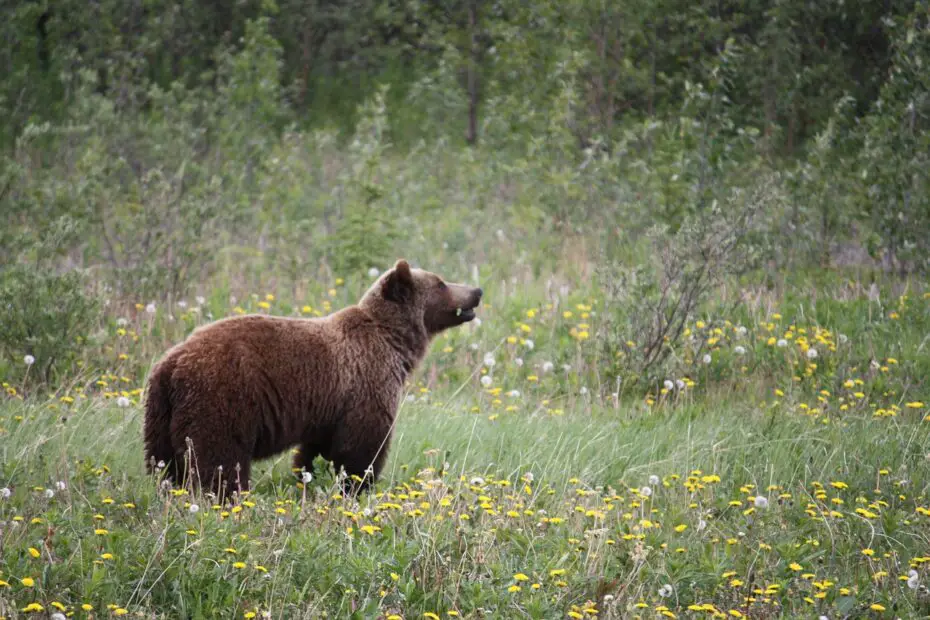Grizzly bears, with their awe-inspiring presence and powerful physique, have captivated human fascination for centuries. In this article, we delve into interesting facts about grizzly bears, exploring their size, habitat, diet, unique adaptations, and more. Get ready to be amazed by the intriguing facts that make these majestic creatures truly remarkable.
You may also want to know the difference between a grizzly bear and a brown bear.
Size and Physical Characteristics
Grizzly bears are known for their impressive size and strength. On average, adult males can weigh between 400 to 600 pounds (180 to 270 kilograms) and stand about 6 to 7 feet (1.8 to 2.1 meters) tall when on their hind legs. Females are generally smaller, weighing around 200 to 400 pounds (90 to 180 kilograms).
Range and Habitat
Grizzly bears inhabit various regions across North America, including Alaska, western Canada, and parts of the United States. They are well adapted to diverse habitats such as forests, meadows, tundra, and mountains. Their ability to thrive in such varied environments showcases their resilience and adaptability.

Diet and Feeding Habits
Grizzly bears are omnivorous, meaning they consume both plant matter and meat. Their diet consists of a wide range of food sources, including berries, nuts, roots, grasses, insects, fish, and even larger mammals. Their impressive strength and sharp claws allow them to dig for roots and uncover food from logs or rocky crevices.
Hibernation and Reproduction
During winter, grizzly bears enter a state of hibernation to conserve energy and survive the harsh conditions. They prepare by accumulating fat reserves during the summer and fall months. Female grizzlies give birth during hibernation, and their cubs remain with them until they emerge from their dens in spring.
Social Behavior and Communication
Grizzly bears are typically solitary animals, except during mating season and when females have cubs. They communicate using various vocalizations, body postures, and scent marking. Roaring, growling, and woofing are some of the sounds they use to communicate with other bears.
Unique Adaptations
Grizzly bears possess several unique adaptations that contribute to their survival. Their powerful shoulder muscles and long, curved claws enable them to dig, climb, and defend themselves against potential threats. Their keen sense of smell, with a range of up to 20 miles (32 kilometers), helps them locate food and detect predators.
Conservation and Threats
The conservation of grizzly bears is of utmost importance due to various threats they face. Habitat loss, human-wildlife conflict, illegal hunting, and climate change pose significant challenges to their survival. Efforts are underway to protect their habitats, implement sustainable practices, and raise awareness about their conservation needs.

Interesting Facts About Grizzly Bears
Let’s dive into some captivating facts that highlight the incredible nature of grizzly bears:
Fact 1: Grizzly Bears vs. Black Bears
Grizzly bears can be distinguished from black bears by their larger size, hump on their shoulders, and a more concave facial profile. Their habitats also differ, with grizzlies preferring more open spaces compared to black bears.
Fact 2: Grizzly Bear Speed
Despite their size, grizzly bears are remarkably fast runners. They can reach speeds of up to 30 miles per hour (48 kilometers per hour) for short distances, showcasing their agility and power.
Fact 3: Grizzly Bear Cubs
Grizzly bear cubs are born small and helpless, weighing only about 1 pound (0.5 kilograms). They rely on their mother’s care and protection until they become independent, typically at around two to three years of age.
Fact 4: Fishing Skills of Grizzly Bears
Grizzly bears are exceptional fishermen. They possess incredible patience and agility when hunting for fish, particularly during salmon spawning season. They will patiently wait near waterfalls or streams, using their swift paws to catch their prey.
Fact 5: Grizzly Bear Senses
Grizzly bears have excellent senses, including a keen sense of smell, acute hearing, and good eyesight. Their sense of smell is their most dominant sense and helps them locate food from great distances.
Conclusion
You have read some Interesting Facts About Grizzly Bears. Grizzly bears continue to captivate our imagination with their immense size, remarkable adaptations, and unique behaviors. From their strength and hibernation habits to their fishing skills and keen senses, these creatures are truly extraordinary. By appreciating these fascinating facts, we can develop a deeper understanding of grizzly bears and work towards their conservation and coexistence.
